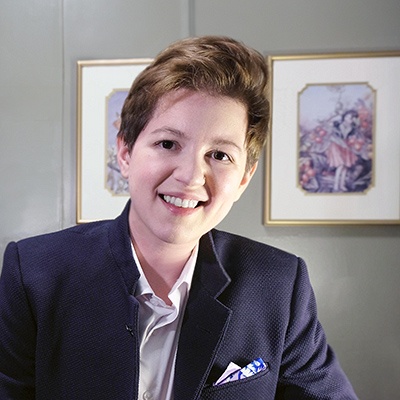
The Biomedical Visualization and Communication program provided an opportunity to bust down barriers between art and science, and invited different expressions and perspectives. It’s everything I could have dreamed of. I’m excited about making a difference in the lives of others.”
Milo, Biomedical Visualization and Communication student
When Milo entered the Biomedical Visualization and Communication program at the start of 2021, he did so with the goal of becoming a medical illustrator. A graphic novelist and professional illustrator, he wanted to study science, and use his skills to support and advocate for neurodiverse, 2SLGBTQIA+ and transgender communities.
But he was completing the program at the end of 2021, Milo had so many opportunities in front of him, he had to turn a few down, including a book deal. “The opportunities have been unbelievable. The door just opened up for me,” he says.
It was the opportunity to pursue research that proved the most irresistible. In 2022, Milo will begin a Master of Science (Epidemiology) at SFU, where he’ll study health determinants of autism in Two-Spirit communities.
“One of the reasons I became interested in science communications is I see people from underprivileged socioeconomic positions unable to get their illnesses diagnosed because of a vocabulary barrier,” says Milo.
“I could have had a career in illustration and it would be have been comfortable and fun,” he adds. “The Biomedical Visualization and Communication program has opened doors to advocacy and methods I can use to help other people. And It has empowered me to talk to those who are educated in science and research.”
Milo has also been invited to join the Two-Spirit Dry Lab, Turtle Island’s (Canada’s) first research group that focuses on the wellbeing of Two-Spirit and Indigenous people.
“It’s everything I could have dreamed of. I’m in the place I’m supposed to be.”
Stay connected
Sign up for news and updates about UBC Extended Learning programs, courses, info sessions and more.